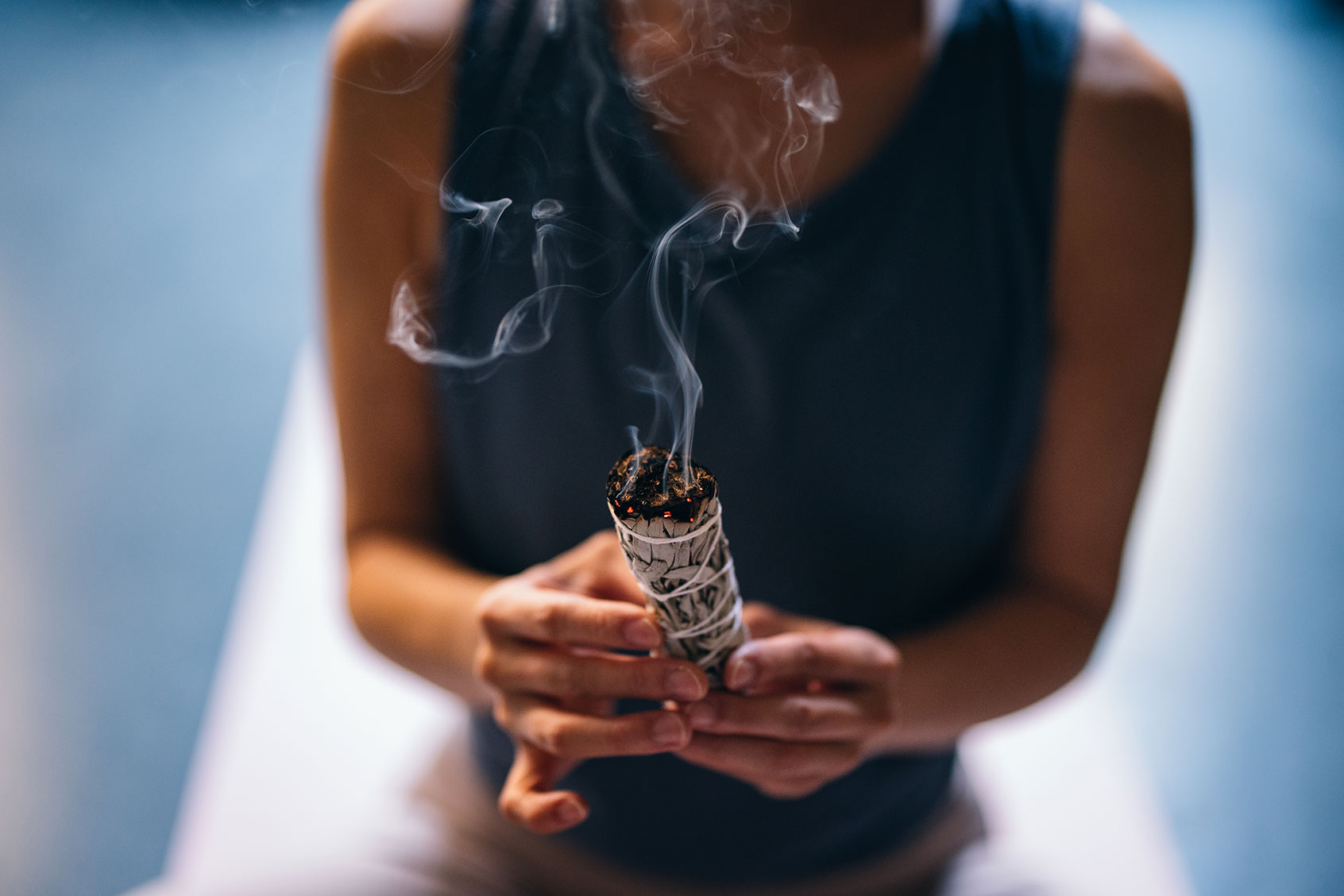In the new year, we want to be new people. We make lists of what's in and what's out. We want to take on healthy new habits to help revitalize our lives. Some people want to get rid of the bad energy that followed them from the past and they do that with sage.
Traditionally, burning sage or smudging sage is the practice of burning herbs to purify or bless people and places. In new-age spirituality, the practice claims to essentially eliminate negativity from your space or even yourself. Smudging can clear your emotional, energetic, spiritual and physical body. The most important aspect of it is that it should help you start fresh.
This practice has become incredibly popular with wellness people whether it is suggested by a holistic granola mommy blogger on YouTube or a Gen Z witch on TikTok, urging you to cleanse your room, office space and sometimes even body parts. Despite its seemingly wholesome appeal – herbs! starting fresh! revitalized energy! – when looked at more closely, the burning of sage may not be so positive. Here's why you should reconsider before lighting up the sage this year:
Complicated Indigenous roots
While this wellness practice has been popularized by wellness gurus and witchy social media influencers, smudging sage originated with the Indigenous peoples of the Americas. For Native people, smudging is the ceremony used for spiritual cleansing or blessing, but not all Indigenous people even use sage to smudge. Furthermore, Indigenous people may use herbs like white sage for their rich medicinal properties. White sage itself is loaded with antioxidants and is said to heal colds and lower blood sugar.
Even though people have adopted forms of smudging herbs, at one point in history this freedom wasn't awarded to Indigenous people in the Americas. Smudging was banned in both Canada and the U.S. in the 1800s. The ban wasn't lifted in Canada until the 1950s and in America, it was in 1978 when the American Indian Religious Freedom Act restored the use of sage to Native Americans again.
Bustle reported that “many [Native people] were jailed and killed just for keeping our ways alive, including my great-great grandfather,” Ruth Hopkins, a Dakota/Lakota Sioux writer, told the publication. "Smudging sage was part of those banned religious practices”
That is why the co-opting of the practice of burning sage by non-Native people is a clear example of cultural appropriation. Native people were persecuted at the hands of the government because of their religious and cultural beliefs, and now it's been exploited by holistic hippies who have no idea of its historical context and cultural significance.
The dangerous demand for sage
While California white sage is currently not on the endangered list, picking white sage on public land is illegal but continues. Sadly, the popularity has resulted in an overconsumption of the herb. Over-harvesting sage by commercial sellers has significantly decreased the quantity of sage. It also has increased the threat of wildfires and urban development, showcasing how crucial white sage is to its surrounding ecosystem.
Also, a lot of the sage sold in the U.S. is illegal despite brands promoting it as ethically sourced. These grave concerns endanger Native people's long-standing access to and use of sage. Many Native people have reported visits to traditional harvesting sites and have found them bare. Their sage supply has been destroyed by commercial sellers or people who rip the plants up by their roots. It's crucial to leave the roots while harvesting because that is how the plant grows back. And as inexperienced sellers come in and destroy the plants, it will endanger them.
If I'm being frank, you probably shouldn't use sage if you're non-Native. That may not stop people from using sage or smudging it; I also have the sage I was gifted years ago by my best friend. The least we could do is decrease the overconsumption of the herb. Instead of buying white sage, we can consider the impact before purchasing it. It is said that sage should never be bought but only gifted. But even gifted sage may come from a dubious origin. It is reported that a lot of the sage sold in the U.S. is coming from illegal harvests while it is still being promoted as ethically sourced sage.
Culturally, smudging is so irretrievably tied to Indigenous people's traditions and cultural identities, that it feels wrong to rebrand this meaningful and important practice as a new wellness gimmick to usher in a new year. People who use it to cleanse their negative energy or space are often using it incorrectly according to Native people. Bianca Millar of the Wendake reserve in Québec told The Ethos, “We don’t believe you should light your smudge or your sage with a lighter. We believe that the butane in lighters kind of kills that medicine, so you should use matches.”
Alternatives to sage
If you want to continue smudging not all hope is lost. There are plenty of alternatives to white sage. Other herbs like lavender, mint and rosemary are perfect substitutes for the practice. You can even use incense, which is my preferred tool to smudge my space. Putting essential oils in a diffuser is also an option to revitalize your space. I suggest staying away from Palo Santo, another popular plant used to cleanse but it is also potentially endangered because of overconsumption. Ultimately, if we want to start fresh this new year, it's probably best to do the least harm we possibly can and that means giving up burning sage in 2024.

